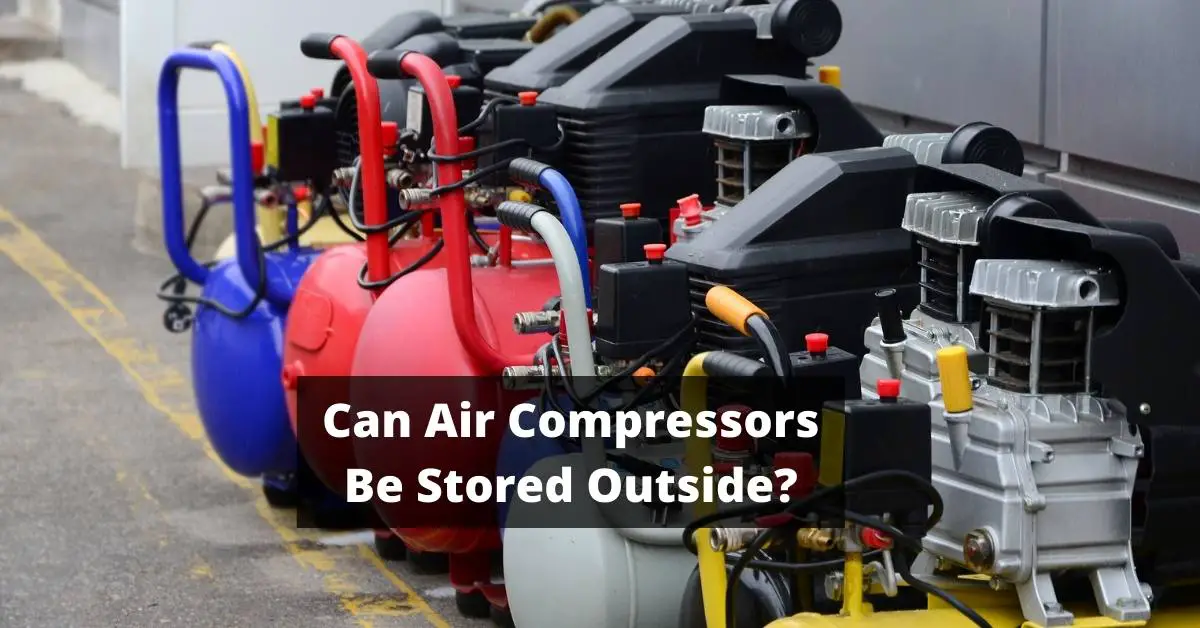Hey folks, if you’re reading this article, chances are you’re looking to increase the CFM (cubic feet per minute) of your air compressor. As someone who’s been in the industry for over a decade, I can tell you that understanding and improving your compressor’s CFM is key to maximizing the performance of your air tools and increasing productivity.
When it comes to air compressors, CFM is essentially how much air flow or volume it can output at any given time. If you’ve ever experienced slow or weak tool performance, it could be due to low CFM – which means not enough air is getting through to power up your tools. But don’t worry – whether you’re a DIY enthusiast or a professional mechanic, there are several steps you can take to boost your compressor’s CFM and get more out of your tools.
In this article, we’ll go over some practical tips on how to do just that. So let’s dive in!
Understanding CFM and Why it Matters
You might not have realized it, but understanding the concept of CFM and its importance can greatly improve your compressor’s performance. CFM stands for cubic feet per minute, which is simply a measure of how much air your compressor can deliver in one minute.
This measurement is crucial because it determines the amount of power that your tools receive from the compressor. If you don’t have enough CFM for your tools, they won’t work properly or may even be damaged.
For example, if you’re using a spray gun that requires 10 CFM and your compressor only delivers 8 CFM, then the spray gun won’t produce an even coat of paint. Plus, over time, the constant strain on your compressor will cause it to wear out faster.
To avoid these issues, it’s important to check the CFM requirements for all your tools before purchasing a new air compressor. That way you’ll know exactly what size and capacity to look for in a new unit.
In the next section, we’ll discuss how to check your current compressor’s size and determine if you need to upgrade.
Checking Your Compressor Size
If you’re wondering whether your current setup is enough to handle your tools and projects, take a closer look at the size of your compressor. The size of your compressor’s tank will determine how much air it can hold, while its horsepower rating will indicate how much power it can generate. These two factors are key in determining the CFM output that your compressor can produce.
A smaller compressor tank may be sufficient for light-duty tasks like inflating tires or powering small air tools, but it may not be able to keep up with larger tools that require more air flow. Similarly, compressors with lower horsepower ratings will have a harder time producing the high volume of air required by sanders, grinders, and other heavy-duty equipment.
If you’re planning on using these kinds of tools regularly, investing in a larger compressor with a higher horsepower rating will pay off in the long run. When choosing a new compressor or evaluating the one you already have, make sure to consider both its tank size and horsepower rating. It’s better to invest in a more powerful model than to risk damaging your tools or losing productivity due to insufficient airflow.
In the next section, we’ll cover another important factor that affects CFM: inspecting and replacing your air filter.
Inspecting and Replacing Your Air Filter
Make sure your tools are performing at their best by regularly inspecting and replacing your air filter. This will improve the efficiency and longevity of your compressor.
Your air compressor’s filter is responsible for removing any contaminants in the air before it enters the compressor. This ensures that clean air is used to power your tools.
Over time, however, this filter can become clogged with dust and debris. This can restrict airflow and reduce your compressor’s CFM (cubic feet per minute) output.
To inspect and replace your air filter, start by consulting the owner’s manual for specific instructions on how to remove it from your particular model of compressor. Once removed, visually inspect the filter for any signs of damage or excessive dirt buildup. If you notice that it is dirty or clogged with debris, it’s time to replace it with a new one.
By keeping a clean air filter in place at all times on your air compressor, you’ll be able to ensure maximum airflow and CFM output from your machine. This means that you’ll have more power available to run even demanding tools like sanders or grinders without experiencing a drop in performance.
In the next section, we’ll discuss maintaining proper pressure and airflow so you can get even more out of your machine.
Maintaining Proper Pressure and Airflow
When it comes to maintaining proper pressure and airflow in your air compressor, there are a few key points you need to keep in mind. Firstly, it’s essential to regularly check and adjust the pressure settings of your compressor to ensure they’re within the recommended range.
Secondly, cleaning and lubricating your compressor is crucial for its optimal performance and longevity. As someone who has experience with air compressors, I can attest that following these steps will help you get the most out of your equipment.
Check and Adjust Pressure Settings
You’ll want to take a closer look at your pressure settings – fine-tuning them could be the key that unlocks greater power and efficiency from your compressor.
First, you should check the manufacturer’s recommendations for optimal pressure levels. Then, use a gauge to measure the current pressure output of your air compressor. If it’s below the recommended level, adjust the regulator until you reach the desired pressure.
It’s important to note that increasing pressure too much can actually decrease airflow and damage your equipment over time. So, make sure to find a balance between optimal pressure levels and safe usage.
Once you have found this balance, you may notice an increase in CFM output and overall performance from your air compressor.
As we move forward, it’s also important to consider how clean and lubricated components can further improve compressor efficiency.
Clean and Lubricate Your Compressor
To keep your compressor running smoothly and extend its lifespan, it’s important to regularly clean and lubricate it. Dirt, debris, and moisture can build up inside the compressor over time, leading to increased wear and tear on the internal components. This can result in decreased performance and even damage to the unit.
To clean your compressor, start by disconnecting it from power and releasing any built-up pressure. Then, use a soft-bristled brush or compressed air to remove any dirt or debris from the exterior of the unit. Next, remove the oil fill cap and drain any old oil from the reservoir. Refill with fresh oil according to manufacturer specifications before replacing the cap. Finally, run your compressor for a few minutes to circulate the new oil throughout the system.
Now that you’ve cleaned and lubricated your compressor, you may want to consider upgrading your air tools to take full advantage of its increased performance capabilities. With more powerful tools at your disposal, you’ll be able to tackle bigger jobs faster and with less effort.
So, let’s explore some options for upgrading your air tools in our next section.
Upgrading Your Air Tools
Upgrading your tools can enhance their performance, leading to more efficient work and potentially reducing project time by up to 30%.
When it comes to air compressors, upgrading your air tools can be a game changer. By choosing high-quality air tools that require less CFM (cubic feet per minute) than your current set, you’ll be able to run multiple tools at once without sacrificing performance.
There are many types of air tools on the market, each with its own unique set of features and benefits. From impact wrenches to sanders and grinders, choosing the right tool for the job is essential for maximizing efficiency. Look for models that have an ergonomic design and comfortable grip, as these will reduce fatigue during prolonged use.
Overall, upgrading your air tools is a smart investment that can improve productivity and deliver better results in less time. But don’t stop there – adding additional tanks or compressors can further increase your CFM output and allow you to tackle even bigger projects with ease.
With the right combination of equipment upgrades, you’ll be able to take on any task with confidence and precision.
Adding Additional Tanks or Compressors
If you want to take on bigger projects with ease, consider adding more tanks or compressors to your set up. This is a great way to increase your air compressor CFM and improve the efficiency of your tools.
When you add additional tanks or compressors, you create more storage capacity for compressed air, which means that you can run multiple tools simultaneously without losing pressure. Adding another tank is a simple solution that can be done by connecting it to the existing one in series or parallel. If you opt for this method, make sure that both tanks have the same working pressure and volume capacity.
On the other hand, if you decide to add another compressor, it’s essential to ensure that both machines are compatible and have similar output ratings. You can connect them in parallel or series depending on your requirements.
Overall, adding more tanks or compressors is an effective way of increasing your air compressor CFM. However, before making any modifications or changes to your system, be sure to consult an expert who can guide and advise you on the best course of action based on your specific needs.
In the next section, we’ll discuss how monitoring and testing your CFM levels regularly will help maintain optimal performance levels for all your tools.
Monitoring and Testing Your CFM
Make sure you keep a close eye on your CFM levels by regularly monitoring and testing them, as it’s like checking the gas gauge in your car to ensure you have enough fuel to reach your destination.
One of the most reliable ways to test is through an air flow meter that can measure the volume of air flowing through the system. You can also conduct a manual test by timing how long it takes for your compressor to fill up a tank.
Testing and monitoring your CFM levels is crucial because low levels can lead to underperformance and damage to equipment. If you notice any decrease in airflow or unusual sounds coming from your system, it may be time for maintenance or repairs.
It’s important not to overlook these symptoms as they could lead to costly damages down the line.
By keeping up with regular testing and monitoring of CFM levels, you’ll have a better understanding of when it’s time for maintenance or upgrades. This will not only save you money in terms of preventing damages but also increase efficiency and productivity when using your air compressor.
Don’t forget that regular upkeep is key in ensuring optimal performance from all types of machinery, so make sure you take care of yours!
Conclusion
So there you have it, folks. Increasing your air compressor’s CFM is essential for better performance and efficiency in your workshop or garage. By understanding the basics of CFM and following these tips, you can easily boost your compressor’s output.
However, some may argue that upgrading air tools or adding additional tanks/compressors can be costly. While this is true, it’s important to remember that investing in high-quality equipment will save you money in the long run by improving productivity and reducing downtime. Plus, with proper maintenance and monitoring, your compressor will last for years to come.
As someone who has worked with air compressors for years, I can attest to the importance of having a reliable and efficient machine. With these tips and a little bit of effort, you’ll be able to increase your compressor’s CFM and take on any project with ease.


